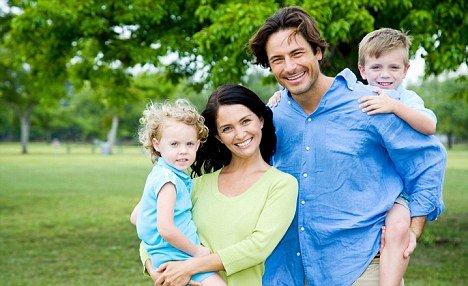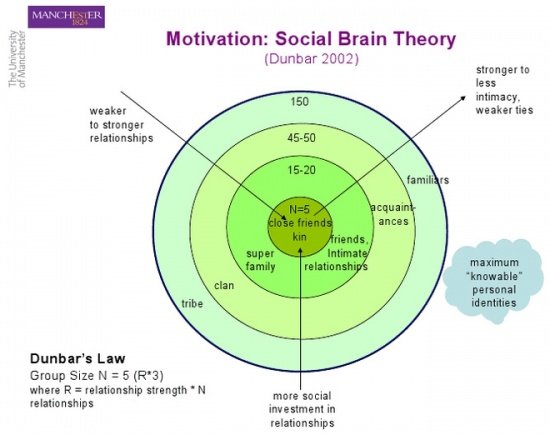Will We See A Return of the Multi-Generational Household?
The Traditional Nuclear Family?
Everyone in the developed world is likely familiar with the nuclear family, even if you don't often use that phrase. Mom and Dad (usually married) living together with their kids, until those kids come of age and "leave the nest". Usually there is an expected age for when a child moves out, generally between 18 and 21.
Usually the discussion of this model revolves around its decline and possible disappearance, with changing attitudes towards gender roles, marriage and child rearing. Rarely mentioned is the fact that this so called tradition is actually incredibly modern. The "nuclear family" arose after World War II, first largely in the US with the rise of the US middle class in the post war era. The model it replaced was the multi-generational household, which was the norm for as long as the concept of a 'household' has been in existence. Humans are an inherently tribal species, a 'tribe' living together in one home is a very natural fit for many reasons. A war spanning the globe over 6 years, separating the male population from their families, as well as rapidly changing post-war economic circumstances was what it took for 'normal' to change.
Advantages of the Multi-Generational Household
There are many advantages to the multi-generational household, which are primarily economic and biological. The cost of the home in terms of maintenance and/or rent is spread over many people. Younger members of the family and others who can't presently contribute can be relieved of the burden of finding and paying for a place to live. The burden of child rearing can be spread over many people. Parents have the option to work in ways that bring in income, while the older generation which may have retired from their form of labor, can still participate in the family through child rearing and/or taking care of the home. Siblings and in-laws may both have children in the same home, and share supervision. When a family member is sick, there will always be others around to take care of them. Of course a multi-generational household is not of unlimited capacity, and some members will be expected to move out at some stage. However with no specific time frame as an expected norm, younger members can stay or leave on their own terms, at times which make economic sense for them. The economic impact of decisions at key early times in a person's life will have compounding influence on the rest of their lives.
Those are the major economic advantages, but biological advantages are numerous as well. The Environment of Evolutionary Adaptation for humans over potentially millions of years, was almost entirely tribal. We are therefore highly adapted to living in the tribal model (the "tribe" forms part of our environment). Despite the modern stereotype, people are more tolerant and pro-social among their own family members. They are less stressful and bonds are lifelong by their nature. According to the work of Robin Dunbar, people still today split their relationships between family and friends on every level of closeness. We are much more likely to dedicate time and energy to taking care of a sick family member than a sick friend.
Living in a multi-generational household also ensures that members are rarely isolated. Isolation and loneliness are both a cause and result of mental health problems including depression and anxiety, which are major problems on the rise today.
So with all these advantages, why is it not the norm today? It is now almost 75 years since the end of World War 2, if this model is so advantageous it surely has had time to return today. Instead the trend is in the opposite direction, where even the nuclear family seems old fashioned.
Modern Households
There are two other models of household which are very common today but would have been very anomalous for most of human history.
1. Living alone
The latter half of the 20th century and the early 21st century have been a time of immense, worldwide economic growth and industrialization (with periodic exceptions). The initial expansion of the middle class in the US was followed by the same in Europe, and later in Asia. Today we even see the rise of the middle class in parts of Africa. The nuclear family is strongly associated with the middle class, but the prosperity and changing world has led to changing expectations and values. People have more money, and with that we have the expectation of personal autonomy. Living alone on your own means would have been an aspirational fantasy for most people in human history, but is absolutely viable today. It is also a signal of sexual fitness for a man, to be able to afford the costs of a home on his own means alone. As people are having relationships later, getting married and having kids later (if at all), there is a strong incentive to move out from the family and show that you are making it on your own. But much like buying a fancy car, just because it is a display of wealth, doesn't make it a wise financial decision. By spending more at a young age, you lose the opportunity to save more money and benefit from compounding effects of wealth generation.
2. Living with Friends and/or Strangers
A more economical modern option is to get some housemates. They are often friends (this model is exemplified and idealized in the TV sitcom of the same name). This is less showy than having an apartment or house on your own, but more sensible for most. But why choose living with strangers or friends over family? Even if people prefer to live with friends because they are self-selected and like them more, to get to the heart of both these modern households, it is often simply that family is not an option.
It is far, far more common to have to move for work and education in the modern world than even just 100 years ago. Vastly more people go onto third level education, which is frequently in a different part of the city or a different city entirely. Modern work is much more specialized, requiring longer education and higher likelihood that you will need to travel for work. Some people have the choice to study and work locally, but for most people, staying in the family home means abandoning the opportunities for work and education which bring the actual benefits of wealth and prosperity with them. The nuclear family is more flexible than multi-generation because you only have to worry about 2 careers at most (and in its heyday, one would bring in income while the other maintains the home and rears children, so only 1 career) as well as local schools/basic services which you can get basically everywhere. Living with housemates or with friends is more flexible still, and allows an individual to easily move for work, with fairly temporary expectations of your living situation.
The Return?
Ultimately these modern lifestyles, including the nuclear family, are an artifact of the increasing need to be flexible for work and education in the modern world. There are two possible elements which could change these pressures going into the 21st century.
1. Working Online
The first is more concrete: the internet. Although it has permeated our lives now for at least 2 decades, I think the full impact of the internet and the web have yet to be felt. We are seeing the rise of remote work and education. It is a rapidly growing trend, but it is still a small section of the population. As more work is online, whether by remotely interfacing with a computer in an office somewhere, or just general online work which today looks like freelancing, there is less pressure to live in one specific place. If a young person can expect to get an education and a career, the pressure to "leave the nest" may not be as strongly felt. There may come a time when young people can choose to live with their parents without giving up the opportunities of the modern world.
2. Automation and Basic Income
This is more speculative than the first point. The rise of online labour is in its infancy but a clear trend that is happening. Automation is also a clear trend, but how we respond to it is more uncertain. One of the popular ideas for solving the problems of displacement by automation is basic income. If that idea gains traction and we start to see it implemented across society, we may see people feel less forced to move. We may even see whole families move out of expensive cities to live in places that are generally cheaper, where a family can share a lower burden of the cost of a home among more people, while benefiting from the increased prosperity automation brings to society generally.
Thanks for reading my post. This was just something I have been thinking about, which I wanted to get written down somewhere. I hope you found it interesting.


We here in Pakistan are living in a combined family system where everything is being shared, happiness, sadness, expenses, food, each and everything, and that's is the blessing.
I think we will see the move to multi-generational households in urban areas due to the lack of expansion, cities can only get so big and real estate becomes premium. If people want to build the generational wealth they would invest in the family home instead of going out to rent. Not having to commute as you mentioned would also see people remaining in one home.
As for those in Rural areas or ones who move out to homestead a multigenerational home makes sense since you rely on your little tribe to keep the ecosystem going and it's not about outsourcing tasks to companies or individuals. You make your household work through the work of those in it.
I think its a very interesting shift in dynamic as a lot of people will be torn between valuing their personal space and the freedoms the previous generations had as we revert back to multi-gen homes.
I think that today, in developed places like the US where multi-generation is no longer the norm, the places we do still see it are largely inner city urban poor for the reasons you mention (although whether they actually have ownership of the apartment or not).
In Ireland during 19th century it was huge families in large Georgian tenement buildings (which you see all over Dublin today).
That thing is gone. We are going for more stratification.
Posted using Partiko Android
When my family and I lived overseas (southeast Asia) we saw many more multigenerational households that we have seen in the United States.
I am not ready to predict how quickly the western world will choose or have to choose living in multigenerational homes, but I do agree that there are benefits. The hard part will be moving past generations of mindset shift. From a cultural standpoint, I was trained to leave so the idea of moving back in with "mom and dad" is hard. However, I see the possibility of needing to invite a parent or parent-in-law into my home.
To listen to the audio version of this article click on the play image.

Brought to you by @tts. If you find it useful please consider upvoting this reply.